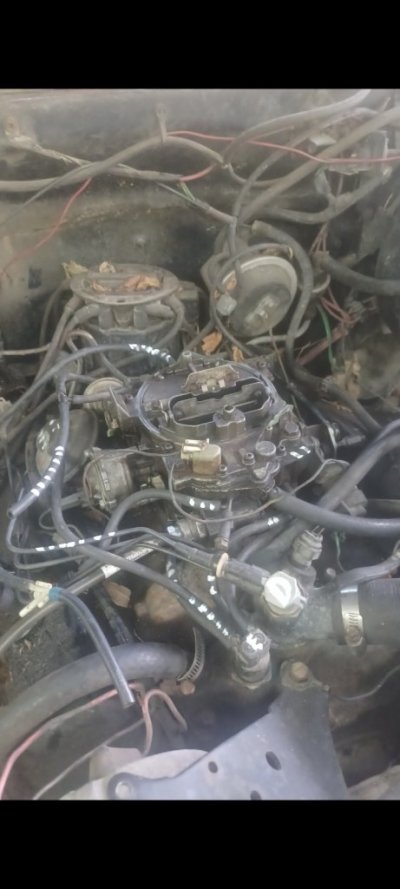I have a ‘75 K25 350 with an 80’s vintage Quadrajet that is similar to yours. Some suggestions.
- if you can’t see fuel squirting in, you definitely need a new accelerator pump assembly. Get one that has seals designed for new ethanol mix fuel. Old pumps had rubber gasket that do not hold up well to new fuel.
- are you sure you got the fuel filter and spring in the proper order and orientation. It’s very easy to forget how they came apart, and the wrong installation will really screw up fuel flow.
- I see two T fittings in the line to the PCV. Do they go to a vacuum canister to vent the tanks? If they do, there is also a purge valve in the system and the purge is vacuum controlled. If not working correctly it could cause a big vacuum leak.
- have you changed the PCV valve? I had mine pop out once from a backfire and it caused the engine to run really bad at idle. Mine was laying on its side, so it was open and causing a big vacuum leak.
- have you verified base timing and that the mechanical advance is working? Factory base timing recommendation is probably about 6 BTDC, but the engine will run much better with about 12 BTDC at 650 rpm, with the vacuum advance line unplugged and capped. Then use a setback timing light to verify that you get about 18-20 degrees more (so it’s now 30-32 total) when rpm is at about 2500-2800 rpm.
Reconnect the vacuum advance line at idle and check to see that you get about 18 degrees from vacuum advance. You need this to help your highway gas mileage.
- do you have a 3 port fuel pump with a return line to the tanks? It will work with a 2 port, but you may have vapor lock issues in hot weather. The tank return keeps circulating fuel and cools it down.
- you said the fuel tank lines and solenoid were worked on recently. Did that mechanic understand the system? It’s not real complicated, but hooking up a few lines incorrectly can screw up fuel flow. For example, if you have a fuel return line they must use a 6 port valve that switches both fuel feed and return. 6 port valves are no longer available new. The vent lines for the tanks T together and run up to the vapor canister.


